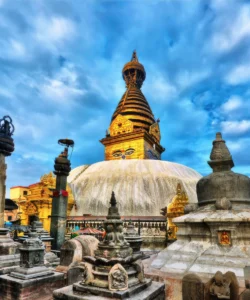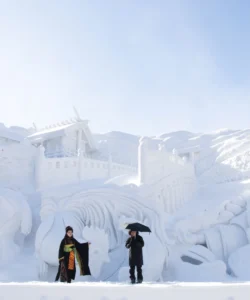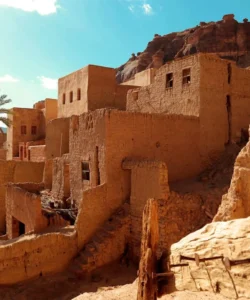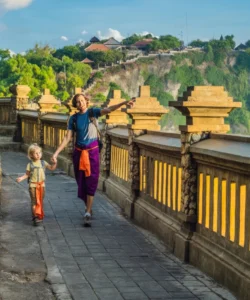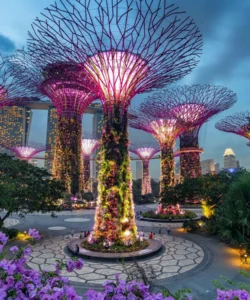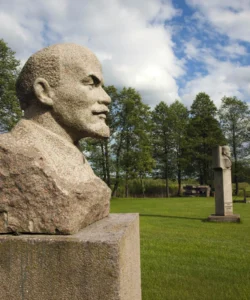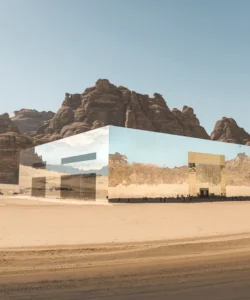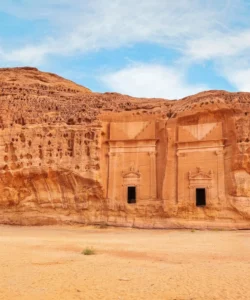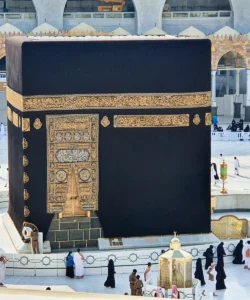The Pashupatinath Temple is a profoundly sacred Hindu temple complex located on the banks of the Bagmati River in Kathmandu, Nepal. It is the holiest site in Nepal, particularly dedicated to Lord Shiva in his manifestation as Pashupati, the “Lord of Animals” or “Lord of All Living Beings.” It’s a vibrant, living temple complex deeply intertwined with life, death, and spiritual cycles, attracting millions of pilgrims and tourists annually.
Name: Pashupatinath Temple (Nepali: पशुपतिनाथ मन्दिर; also called Shree Pashupatinath Temple or Pashupati Mandir)
Address: Bagmati River, Kathmandu, Nepal. It is situated on the eastern outskirts of Kathmandu city, about 5 kilometers northeast of the city center, and is very close to Tribhuvan International Airport. The complex stretches across both banks of the sacred Bagmati River.
How to Get There:
Pashupatinath Temple is a major pilgrimage site and easily accessible from Kathmandu.
- By Air: The closest airport is Tribhuvan International Airport (KTM). From the airport, it’s a short 15-20 minute taxi or ride-sharing (e.g., Pathao) trip to the temple.
- By Taxi/Ride-Sharing: This is the easiest way to reach the temple from anywhere in Kathmandu, including popular tourist areas like Thamel.
- By Local Bus: Public buses are a very affordable option and can take you directly to stops near the temple complex.
- By Foot: While technically walkable from central Kathmandu (around 1-1.5 hours), it’s a long walk, and generally not recommended due to traffic and heat.
- Entrance Fee: There is an entrance fee for non-Hindus to enter the outer complex. Entry to the inner sanctum of the main Pashupatinath Temple is strictly restricted to Hindus only.
- Dress Code: As a sacred site, modest dress is required (shoulders and knees covered). Footwear must be removed before entering many parts of the complex.
- Best Time to Visit: Early morning (before 9 AM) offers cooler temperatures and a chance to observe devotees performing rituals. Late afternoon/evening (after 4 PM) is also very vibrant, with the evening aarti (light ceremony) on the Bagmati River banks being a popular sight. The most significant festival is Maha Shivaratri (February/March), when thousands of devotees gather.
Landscape and Architecture:
Pashupatinath Temple is a sprawling complex that blends traditional Nepalese pagoda architecture with various smaller shrines, courtyards, and ghats along the sacred Bagmati River.
- Nepalese Pagoda Style (Main Temple): The central and most important shrine, the main Pashupatinath Temple, is a two-tiered, multi-roofed structure built in the distinctive Nepalese pagoda style. It features:
- Gilded Copper Roofs: Its two-tiered roof is made of copper and is covered with gold plating, topped with a golden pinnacle, giving it a striking and majestic appearance.
- Silver Doors: The temple has four main doors, one on each cardinal direction, all covered with intricately carved silver sheets.
- Intricate Wooden Carvings: The wooden struts supporting the roofs are adorned with finely detailed carvings depicting various deities and mythological scenes, showcasing exquisite Newari craftsmanship.
- Four-Faced Shiva Lingam: Inside the inner sanctum (accessible only to Hindus) is a unique one-meter-high Mukhalinga (a Shiva lingam with faces carved on it), featuring four faces representing different aspects of Shiva (Sadyojata, Vamadeva, Tatpurusha, Aghora) and a featureless face at the top (Ishana).
- Bagmati River and Cremation Ghats: The temple complex is bisected by the sacred Bagmati River. Along its banks are numerous cremation ghats (platforms for funeral pyres). Hindus believe that dying and being cremated at Pashupatinath, with ashes scattered into the Bagmati (which eventually flows into the Ganges), helps attain moksha (liberation from the cycle of rebirth). This stark yet profound cycle of life and death is openly witnessed here, particularly at Arya Ghat.
- Statue of Nandi: A massive golden statue of Nandi, Lord Shiva’s bull vehicle, sits outside the main temple, facing it, signifying his eternal devotion to his master.
- Vast Complex of Shrines: The entire complex spans over 264 hectares (650 acres) and includes over 500 other temples, shrines, and structures in various architectural styles (pagoda, dome, shikhara), such as:
- Pancha Deval (Five Temples) Complex: Once a holy shrine, now serving as a shelter for destitute old people.
- Ram Temple: A 14th-century Vaishnava temple.
- Guhyeshwari Temple: A sacred Shakti Peetha (revered site of Goddess Sati), also located nearby.
- 108 Shivling shrines: Numerous smaller Shiva lingams are scattered throughout the complex.
- Sadhus and Monkeys: The complex is home to numerous sadhus (wandering ascetic yogis) and a large population of monkeys (considered sacred due to Lord Shiva’s association with animals).
- Kolhapur Period Influence: The current main temple structure was rebuilt in the late 17th century after being destroyed by termites, with significant renovations in the Malla period.
What Makes It Famous:
- Holist Hindu Site in Nepal: Pashupatinath Temple is the most sacred Hindu temple in Nepal and one of the most important pilgrimage sites in the entire Hindu world, attracting millions of devotees.
- Lord Pashupatinath (Manifestation of Shiva): It is dedicated to Lord Shiva as Pashupatinath, the “Lord of Animals,” a unique and revered manifestation of the deity.
- Sacred Cremation Grounds: The open-air cremation ghats along the Bagmati River are famous for offering a profound and direct insight into Hindu death rituals, particularly the belief in attaining moksha by dying and being cremated there.
- UNESCO World Heritage Site: Designated a UNESCO World Heritage Site in 1979 as part of the Kathmandu Valley, recognized for its cultural, spiritual, and architectural significance.
- Pagoda Style Architecture: Its beautiful and intricate Nepalese pagoda-style architecture, with its golden roofs and silver doors, is a defining example of traditional Nepalese craftsmanship.
- Four-Faced Shiva Lingam: The unique Mukhalinga inside the main temple, with its four carved faces representing different aspects of Shiva, is a rare and highly revered icon.
- Maha Shivaratri Festival: The temple comes alive during the annual Maha Shivaratri festival, drawing thousands of pilgrims from Nepal and India for a grand celebration dedicated to Lord Shiva.
- Living Tradition: Unlike purely archaeological sites, Pashupatinath is a continuously active and vibrant center of worship, rituals, and spiritual life, offering an authentic immersion into Hindu devotion.
Differences from Some Other Wonders:
- Open Cremation Rituals: While other sacred rivers exist, Pashupatinath is uniquely famous for the open cremation ceremonies on the ghats of the Bagmati River, which are visible to visitors (from across the river for non-Hindus). This direct, visceral encounter with the Hindu cycle of life and death is unparalleled among major tourist sites.
- Lord of Animals (Pashupatinath): Its specific dedication to Lord Shiva as Pashupatinath, the protector of animals, is a defining aspect of its spiritual identity, leading to the presence of many sacred animals (monkeys, deer) within the complex.
- Nepali Pagoda Style: Unlike the Dravidian style of Meenakshi Amman Temple (towering gopurams) or the Nagara style of Khajuraho (curvilinear shikharas), Pashupatinath’s main temple showcases the distinct Nepalese pagoda style, with its tiered, golden roofs and intricate wooden carvings.
- Exclusion of Non-Hindus from Inner Sanctum: While other sites may have restricted areas, the strict policy of allowing only Hindus into the main temple’s inner courtyard/sanctum is a notable feature, emphasizing its active religious function over broad tourism access.
- Sacred Site for the Dying: The belief that dying and being cremated at Pashupatinath ensures rebirth as a human, regardless of karma, leads to elderly Hindus coming to the complex to spend their last days, adding a unique and poignant dimension of spiritual purpose.
- Four-Faced Lingam: The specific Mukhalinga with its four faces, representing the distinct aspects of Shiva, is a unique and highly revered icon of this temple.
- Sadhus as Living Elements: The presence of numerous colorful sadhus (holy men) performing ascetic practices adds a unique cultural and visual element to the spiritual landscape, often engaging with tourists for photos (sometimes for a fee).
Hindu temple Pashupatinath Photos:
































